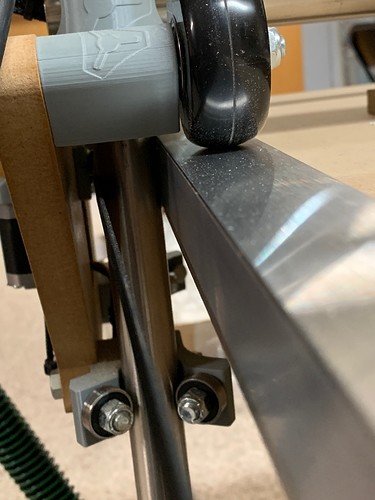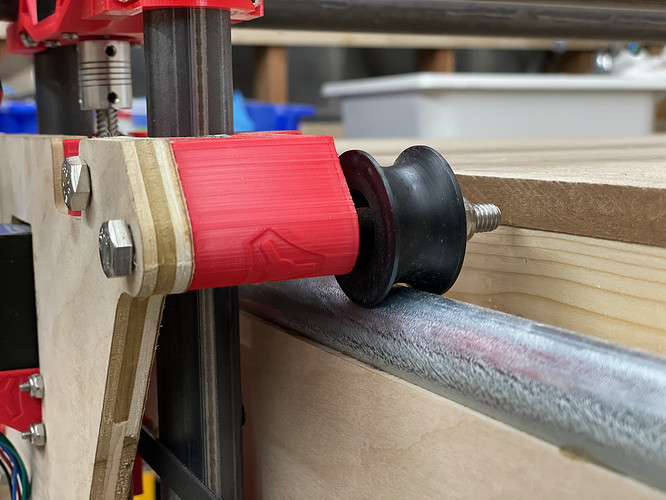I’m seeing many LowRider topics where people are converting to rails. Some of the rail systems seem very reasonable, some… Well, if I wanted to spend that kind of money, I might not be looking for a LowRider, since there are several other DIY style CNC plans out there
I’ve never been entirely clear on what keeps the LR2 from skipping sideways. It seems to me that depending on the wheels’ traction is dicey when the surface might have some dust or chips on it. It seems that belt tension provides some stability as well, though I’m sure that I wouldn’t want to depend on that. The Z rails and Y plates should limit the amount of sideways hop possible, but I don’t see anything there they actually touch (or should be allowed to touch) the table.
I know that people have used C channel, or put angle on the table to keep the wheels straight, but that’s not far shy of just running a rail anyhow.
My impression is that the design as-is should be good enough, but as I said, I’m not really clear on what else there is to prevent sideways movement of the carriage.
I quite like this solution using 1" tube. I might have to ask for STL files for those. I can get steel tube for relatively cheap. If I have to redevelop that myself, I might have both sets of bearings run at 45° so that I can drill mounting holes into the steel and run screws through it into the table edges.
I’ve been looking at getting a table started, and it seems that as a part of that, I might also be looking at setting up my MIG welder that’s been sitting in the garage for 3 years since I bought it. I got as far as installing the welding wire and gun, and haven’t welded a single thing with it. I have the cannister of argon gas still sealed. It’s just been easier to fire up the stick welder that I’ve got for the couple of projects that I’ve had, since the sticks also needed to be used up before they expired from absorbing moisture. Anyway, I thought that some square tube might be just what I need to get a table frame that’s nice and flat

